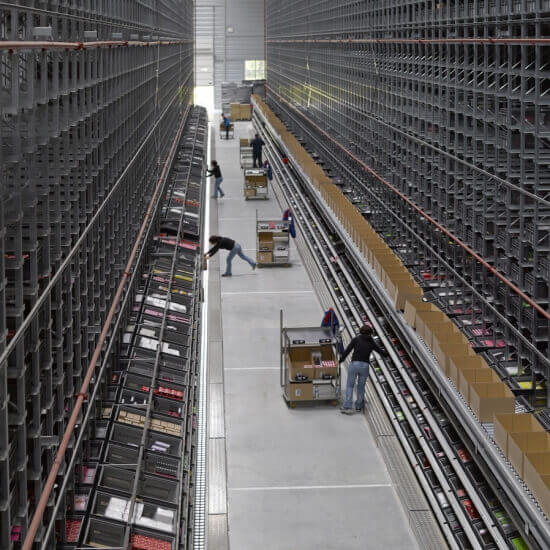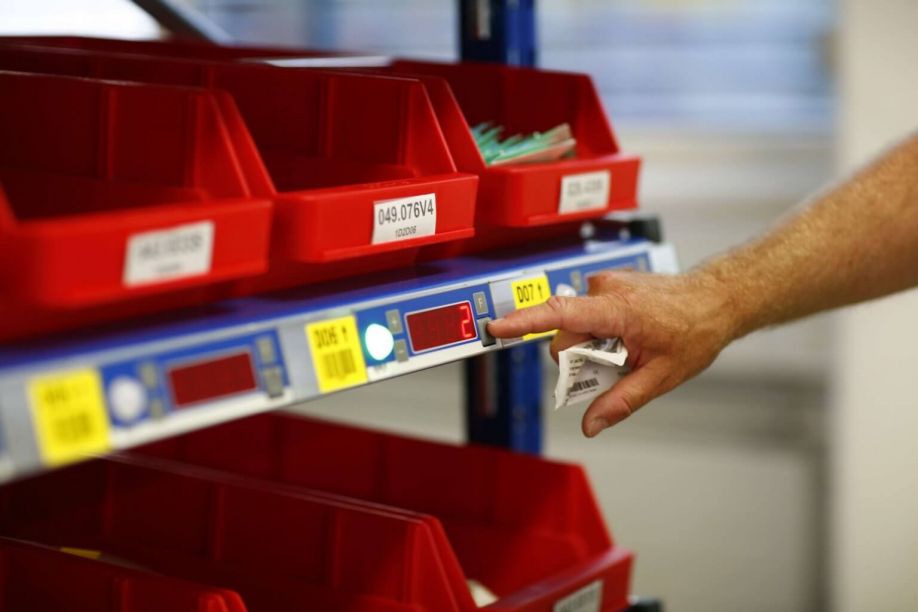In the age of IoT, warehouse automation is at the forefront of many industries. In this series , we will dive into the different technologies used in warehouse automation and the important components to drive its success and efficiency.
 Warehouse Automation: Pick-to-Light Systems
Warehouse Automation: Pick-to-Light Systems

Carlicia Layosa , Product Marketing Engineer | MISUMI
What are pick-to-light systems?
Pick-to-light systems are simple but robust systems and a type of order-fulfillment technology designed to streamline and improve picking accuracy and efficiency, while simultaneously lowering your labor costs. Pick-to-light systems are paperless; which employ alphanumeric displays and buttons at storage locations, to guide employees in light-aided manual picking, putting, sorting, packages, or products. Pick-to-light systems thereby increase efficiency, productivity, and picking accuracy, while concurrently reducing costs.

Pick-To-Light System by Ingenieria-logistica / CC BY-SA
What are put-to-light systems?
Put-to-light systems are essentially the opposite of pick-to-light systems, simply put, they reverse the flow, and a put-to-light system will guide operators to organize incoming goods in a retail store, grouped as a customer order, or in any other organizational method.
How does pick-to-light work?
Here is a step by step description of how pick-to-light systems can work.
1. Operators scan item barcodes that are attached to temporary and reusable holding containers, for example, shipping cartons.
2. The system’s alphanumeric display (typically, LED lights) lights up, illuminating a path to guide the operator to the indicated storage location. There, the system then indicates how many and which items should be picked.
3. An operator picks the items, places them in the holding container, and then presses a button to confirm the picking.
4. The system continues in this way, illuminating each sector for picking until all items have been picked and placed in their respective holding containers.
5. Depending on the pick-to-light system, additional options may be available. In addition to the LED display, pick-to-light also offers an acknowledgment button and a digital readout, to enable more detailed instructions and options.
Benefits of Pick-to-Light Systems
Ease of Use
- Training operators in traditional picking can take hours, or more, depending on the size and complexity of the warehouse. With an efficient pick-to-light system, companies can cut training down to 30-45 minutes.
System Integration
- Many companies can install a standalone pick-to-light system but depending on warehousing needs, companies can also integrate a pick-to-light system with an existing warehouse management system (WMS), enterprise resource planning (ERP), supply chain management, or other host systems, for a higher level of warehouse controls. Also, more advanced pick-to-light systems can produce pick-rate reports, analyze productivity and other metrics, and also allow for variance in the size of work zones, to account for labor-to-order volume needs.
Increased Efficiency
- Pick-to-light systems are usually organized by your existing work zones, which helps minimize walking – and, therefore, boosts efficiency. Additionally, if an order is required to pass through multiple work zones, your pick-to-light system follows the order, helping to reduce idle time.
- Some pick-to-light systems can even be mounted onto mobile carts or conveyor systems, allowing a single operator to fulfill an entire order, through many zones of a warehouse.
Paperless System
- Operators save time by eliminating the steps of dealing with traditional paper-based, record keeping.
Improved Order Accuracy
- From a customer service standpoint, the greatest benefit to pick-to-light systems is fewer picking errors. Pick-to-light helps boost order fulfillment performance.
Lower Labor Costs
- Traditional picking methods add up to one of the biggest expenses in warehouse operations. But when you implement systems for less walking, shorter time to order fulfillment, greater order accuracy – all these factors lead to one major benefit to your warehouse: reduced labor costs.
Commonly Used Components for Pick-To-Light Warehouse Automation Systems
- Factory Frames
- Aluminum Extrusion
- Rollers
- Slide Rails
- Sensors / Switches
- Warning & Signaling Lights
- Timers
- Stack Lights
- Machined Sheet Metals / Machined Sheet Metal Plates
- Gussets, Angle Plates, Welded Steel Stands
- Posts and Struts
- Shaft Supports
- Bushings
- Casters
- Metal Materials
- Conveyors
Pick-to-light systems can be simple or very evolved depending on budget and requirements. As your business grows, it is possible to expand your current pick-to-light system by adding new features as technology evolves. As you grow, MISUMI hopes to grow with you. The next post in the Warehouse Automation Series is Automatic Guided Vehicles (AGV) and Autonomous Mobile Robots (AMR), stay tuned!
The content & opinions in this article are the author’s and do not necessarily represent the views of ManufacturingTomorrow
Comments (0)
This post does not have any comments. Be the first to leave a comment below.
Featured Product


